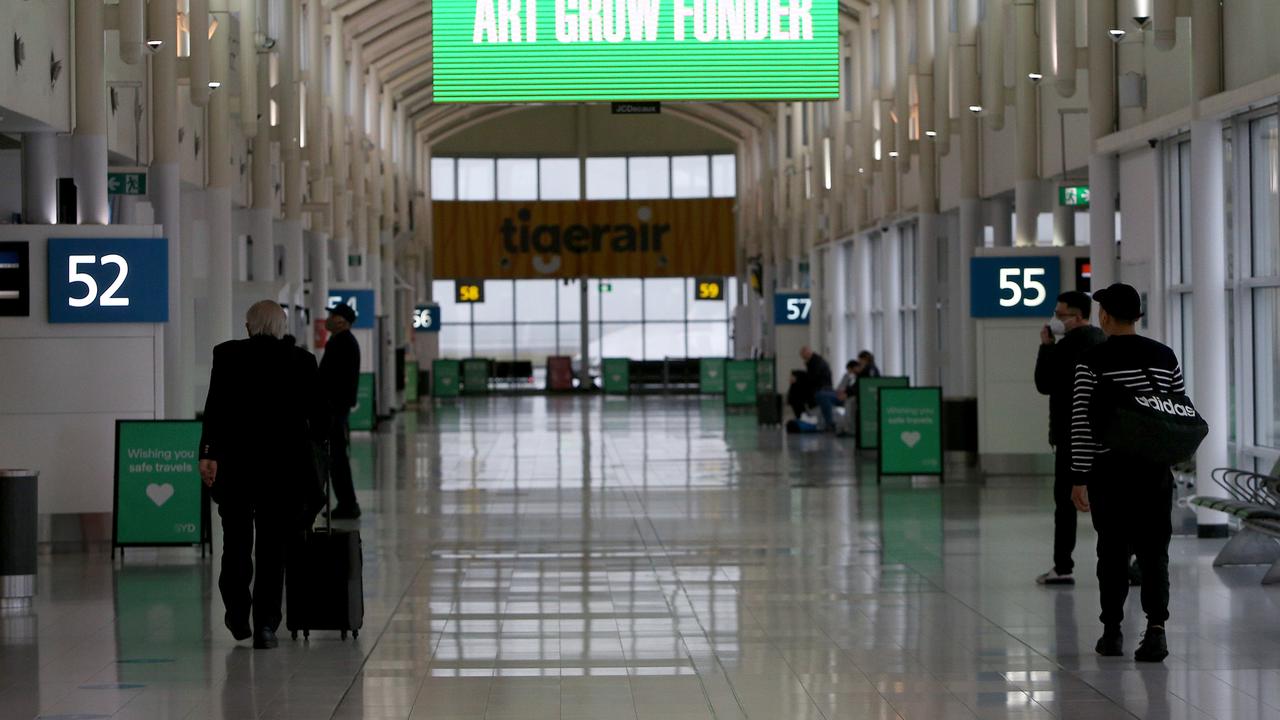Terry McCrann: Why your rates are going up
FOUR things happened during the week of critical importance for what might happen to your home loan interest rates and the economic and investment state of plays more generally, writes Terry McCrann.

Terry McCrann
Don't miss out on the headlines from Terry McCrann. Followed categories will be added to My News.
FOUR things happened during the week of critical importance for what might happen to your home loan interest rates and the economic and investment state of plays more generally.
The Fed — the US version of our Reserve Bank — raised its official interest rate for the first time this year, for the second time in just three months, but for only the third time in nine years.
Two of our big four banks increased their home loan rates even though there’d been no change in its official rate from the RBA — very marginally, not so you’d hardly even notice on your repayments, for basic owner-occupier loans; more noticeably on investor loans.
TERRY MCCRANN: ANDREW LEIGH PROVES TO BE THE SHADOW MINISTER FOR IGNORANCE
The other two big banks, and indeed the smaller banks, can’t be too far behind.
Third, the Aussie dollar did not fall sharply and immediately on the back of that US rate rise. And finally, Wall St hardly blinked on the rate rise either, finishing the week just shy of its all-time high.
The US rate rise poses the two most fundamental questions — for pretty much “everything” — for not only 2017 but indeed 2018 as well: how many more rate rises do we get and how quickly?
Fed head Janet Yellen, in announcing the rise, made soothing noises that suggested “she wasn’t in a hurry”. This was broadly taken as an indication that we were most likely to get only another two this year, and not that quickly — hence the market buoyancy.
Well, one possibility is that Yellen — and investors — turn out to be “right”, that there are only two more this year.
But do they get that “right” for the “right reason” — two more is all the US economy ends up “needing”? Or, for the “wrong reason”: — yes we end up getting two but we should have got more? Or fewer? The first would mean the US economy — and US inflation, and potentially global inflation — had taken off in the classic old-fashioned way.
We would go into 2018 with the Fed having to embark on savage rate hiking, which would be at least destabilising to global markets and the global economy, and potentially devastating, as we’ve seen so often in the past.
The second would mean the exact opposite: we’d be back to the weak US economy, low inflation, even deflation; and consequent low US and global rates, of recent years.
But starting with grossly overvalued share and property markets rather than the opposite as was the case around 2010.

As I’ve been trying to explain, we were always likely to see the banks move to lift their lending rates, even though there is no prospect of an RBA official rate rise any time soon.
Further, “any time soon” became rather longer, after Thursday’s surprise — or, shock — jump in our jobless rate to just below the all-important 6 per cent.
You really do not want to see it go above 6 per cent; and nor does RBA boss Philip Lowe. Nor, obviously, do PM Malcolm Turnbull or his assistant, Treasurer Scott Morrison.
Even so, our home loan rates could still go up, like they did last week, because of those higher US rates.
The banks raise more than one-third of their money for lending on the global market. Higher US rates mean they have to pay more for that money. And that’s before any quite separate, potentially negative, re-rating of Australia and/or the banks specifically.
So, what happens to US rates will flow directly into our bank lending rates. But also, whether Yellen gets it right — or wrong, and whether for the right or wrong reason — will impact indirectly on the global investment view of Australia and how that flows out into the value of the Aussie dollar.
Right now the Aussie is staying relatively strong despite what’s happening to US rates for two reasons.
First, that expectation that US rate rises will be modest and delayed. Second, because extraordinarily, we are going through a mini-China boom of surprisingly high commodity prices actually delivering us a big trade surplus.
Whether that keeps going is yet another “known unknown” in terms of the outlook for the next 18 months to two years. Will it keep going? We simply don’t know; we also need to “know” that we don’t.
I’d suggest very strongly that Yellen doesn’t “know” what’s she’s going to do with US rates; and so self-evidently neither do the rest of us. That includes, most importantly, the so-called “experts”, not just here but on Wall St.
Even more, therefore, we can’t possibly know now whether she’ll get the moves “right”. The bottom line is that the optimism on Wall St tells us this is an “unknown unknown”. The key take-out for investors is to be aware we face a mountain of uncertainty that will persist through the year.
Originally published as Terry McCrann: Why your rates are going up


